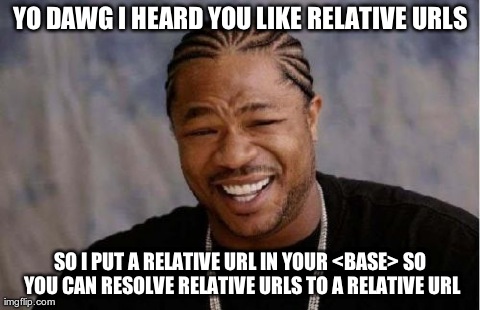@thatemil AFAIK there’s currently no defined behaviour for HEAD requests to a webmention endpoint, so an empty 405 response is probably the safest bet at the moment.
@_minego links with the rel semantic can be used both in human-visible markup for improved back-compatibility and quick error-spotting (as well as layering on top of existing solution) and also in HTTP headers for machine-only use
At any given time my web archive HTTPS to HTTP domain ratio is almost exactly 1:10. Right now it’s at 410 HTTP domains and 41 HTTPS domains. Note that this is just the count of the domains I link to (and which link to me), unweighted by the number of actual physical links.
Successfully got both my RPis automatically connecting to WiFi and serving HTTP and SSH over @pagekite. If you’re having trouble setting up SSH over Pagekite, using Interactive Testing is super useful. Turns out I had typed my secret in wrong — oops!
At least I can not run them headless now and not keep lugging monitor, keyboard etc. into the kitchen (only source of WiFi strong enough for tiny antenna to pick up). Better for my own sanity as well as my housemates’.
Laughing at the @twitter docs using “t.co” and “best practices” in the same sentence: dev.twitter.com/docs/tco-url-wrapper/best-practices
I’m rather impressed with guzzlephp.org’s HTTP Link header abstraction. Parsing Link headers and providing a simple API to check for the existence of/fetch links by rel is welcome attention to detail and cements it’s position as the only PHP HTTP client I will likely ever need.
#TIL that you can put a relative URL in <base> (via Tantek Çelik)
jack_way cheers, I thought it might be too generic but looks like it’s the best choice.
Mobile+Responsive design side effect: People are talking about and thinking in Resources instead of Representations.
Further reading:
@laurakalbag aral there’s a lot to be said for good ‘ol HTTP terminology, even when talking about CMSes and content strategy :)
Earlier, aral wittily quipped:
The CMS I use for my personal sites is called a file system. You might have heard of it. #indieweb
I disagree with this premise. Useful and easy as filesystems are, without a wrapper like Jekyll they don’t manage content (resources), they manage representations (typically HTML).
I find it disturbing that the 6th google result for “content negotiation” is an article from 2003 about how it shouldn’t be used. This needs to be changed.
A tip for users of #piwik #analytics — if you want to use campaigns, but don't want to clutter things up with bothersome URL parameters (which would, for example, make a QR Code a **lot** bigger), just set up a server redirect/alias that redirects from some shortened URL e.g redirect: waterpigs.co.uk/d4/ to waterpigs.co.uk/lutherie/catalogue/dulcimers/D4?pk_campaign=ads&pk_kwd=catalogue (Real example) then use the shorter URL on your actual advertising . It's a bit of a cheat, but works nicely. #webdesign #server #http #apache
A tip for users of #piwik #analytics — if you want to use campaigns, but don't want to clutter things up with bothersome URL parameters (which would, for example, make a QR Code a lot bigger), just set up a server redirect/alias that redirects from some shortened URL e.g redirect:
to
waterpigs.co.uk/lutherie/catalogue/dulcimers/D4?pk_campaign=ads&pk_kwd=catalogue
(Real example) then use the shorter URL on your actual advertising . It's a bit of a cheat, but works nicely. #webdesign #server #http #apache
 Emil Björklund
Emil Björklund Micah N Gorrell
Micah N Gorrell
 Jack Way
Jack Way Laura Kalbag
Laura Kalbag